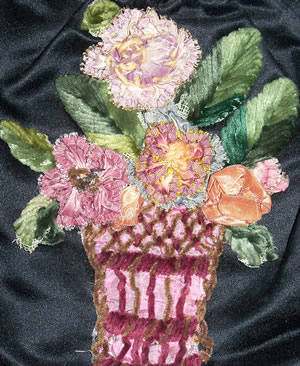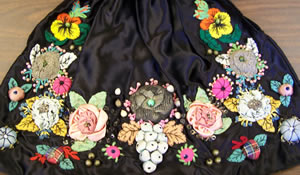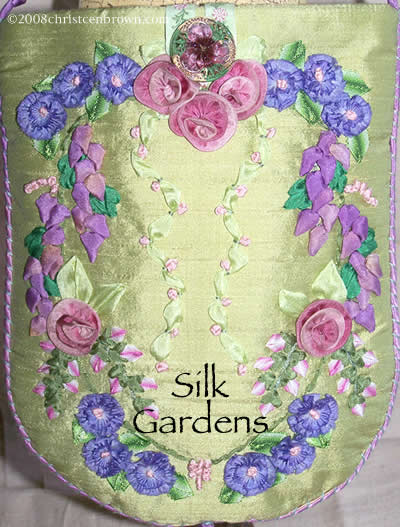
These three purses are from my vintage purse collection. All are embroidered with tambour embroidery, possibly French. Clockwise from the left:
- Handbag with plunger clasp and chain handle: black moire silk with cream and pink roses and sage green leaves. Circa early 1900’s.
- Handbag with double frame and cloth handle: black silk satin with light pink, deep pink, crimson, and mauve colored roses and olive green leaves. Circa early 1900’s.
- Handbag that flips open flat with chain handle: black faille with pink, red, yellow and orange roses and olive green leaves.
Tambour embroidery, introduced to the Western world by France, is a continuous worked chain stitch formed with a tambour hook, which forms a loop similar to a crochet chain. The stitch is formed on the fabric with the thread held underneath in one hand while the other hand inserts the hook down through the fabric to catch the thread. The needle is brought back through the same hole, forming a loop. The following stitches are formed a short distance from the previous stitch, catching the loop of the last stitch at the beginning of the next.
Happy Stitching, ~Christen





